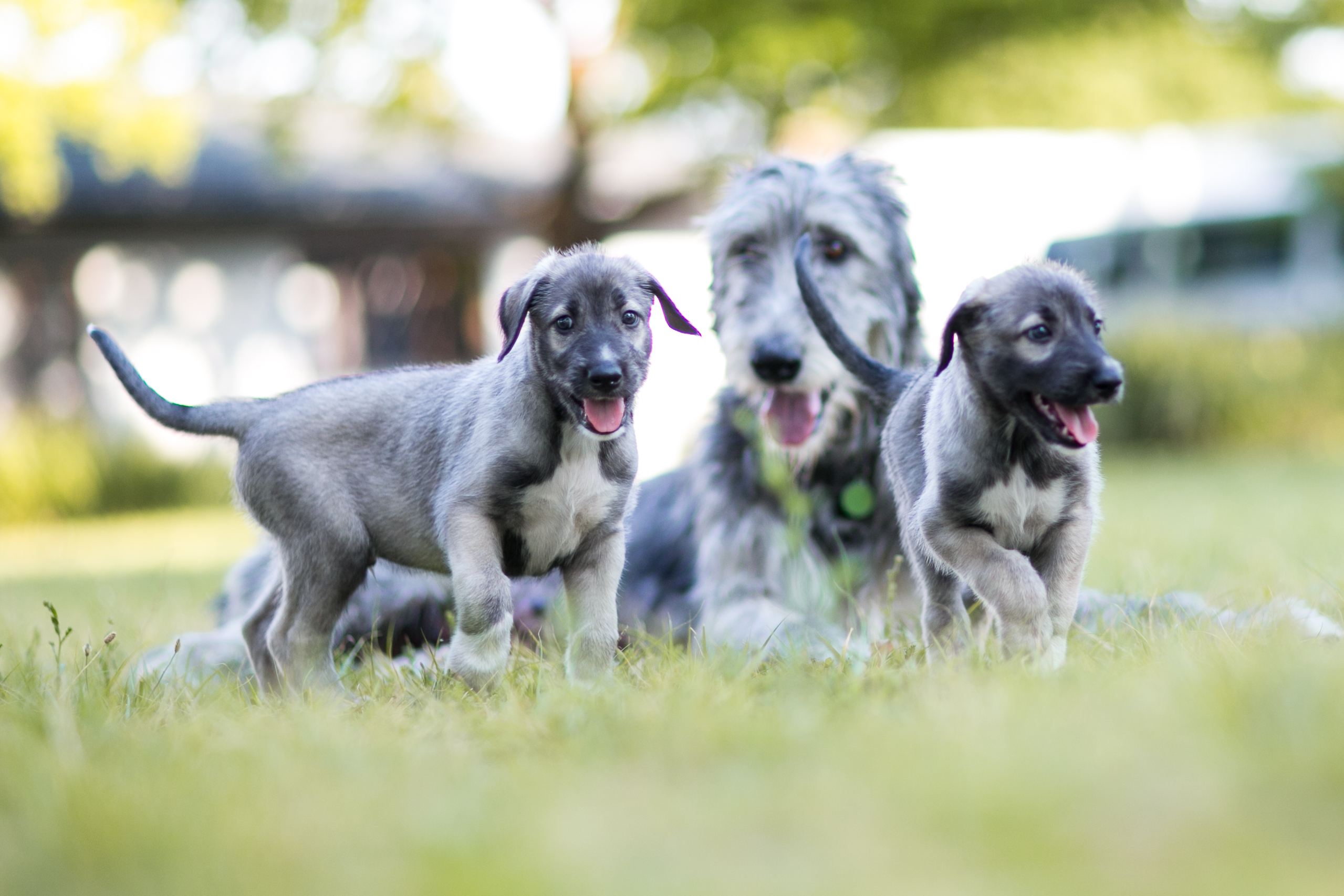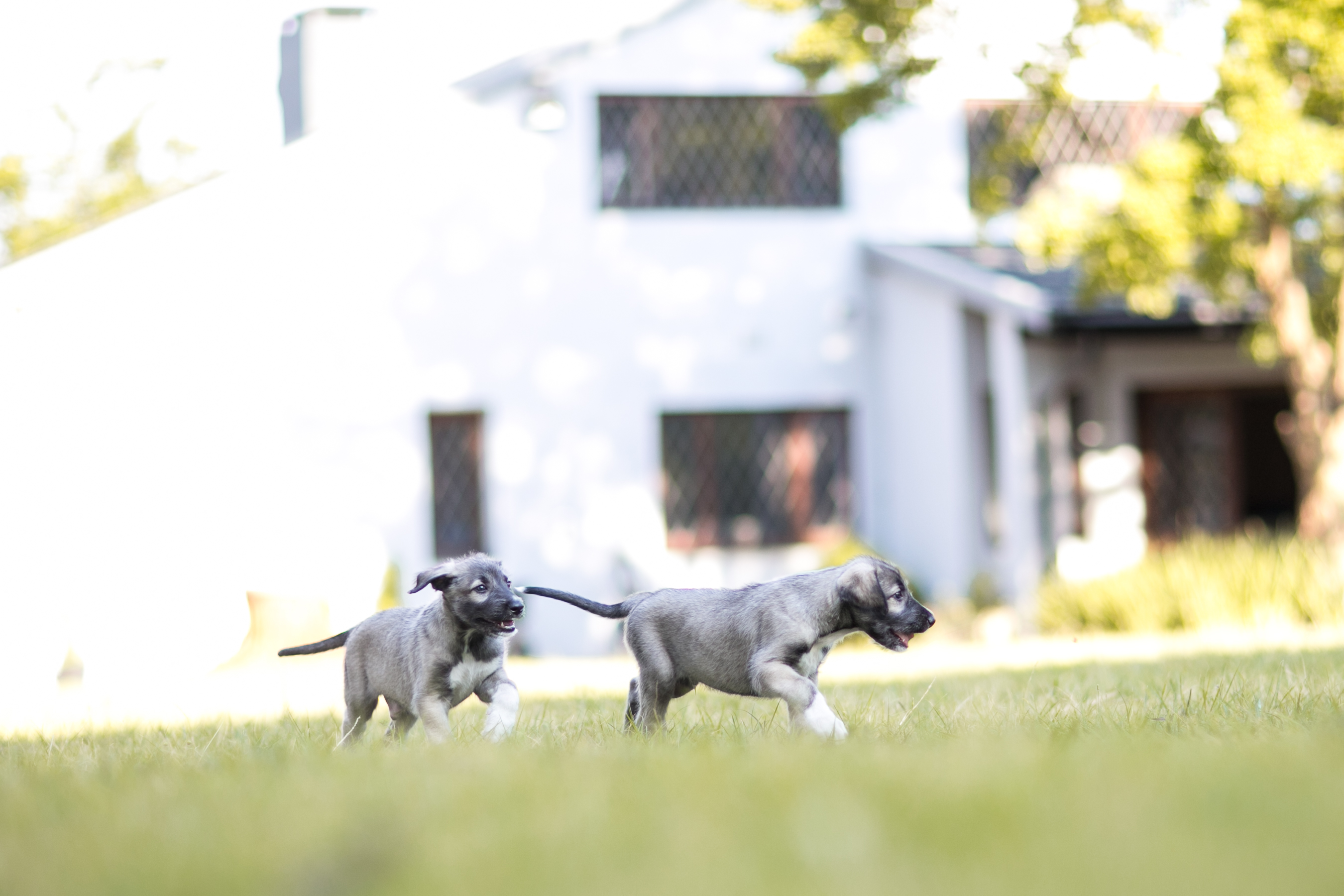Double Dogs: Identical Twin Puppies Confirmed

Two puppies born in October are in fact identical twins, a team of veterinarians reports. This is the first time that a genetically confirmed set of identical twin dogs has been reported in the scientific literature.
"What happened in this case … would have been the same thing that happens in a woman when she has identical twins," Carolynne Joonè, a veterinarian and lecturer at James Cook University in Australia, and co-author of the report of the finding, told Live Science.That is, early during the mother dog's pregnancy, a fertilized egg split in two, creating two genetically identical embryos, Joonè said.
The Irish wolfhound puppies were first suspected to be twins when, during their birth last October in South Africa, veterinarian Kurt De Cramer observed that the two puppies had shared a single placenta. The puppies' mother had been straining to give birth for several hours and was taken to De Cramer, who performed a Cesarean section, Joonè said.

De Cramer began cutting at the site of an unusual bulge in the uterus. From that incision, he removed one puppy, and then saw that there was another fetus within the same placenta. Very excited, De Cramer "put [the newborn puppies] on the table next to him, within the [operating] theater, and quickly got assistants to take photographs of these pups still connected to a single placenta," before cleaning them up as usual, Joonè said.
The veterinarian also delivered the mother's other five puppies, each with its own placenta, the authors wrote in their paper. [Seeing Double: 8 Fascinating Facts About Twins]
De Cramer thought it possible that the placenta-sharing pups were monozygotic twins, Joonè said. To test this hypothesis, when the puppies were 2 weeks old, De Cramer, Joonè and another colleague, Johan Nöthling, a veterinarian and professor at the University of Pretoria, drew blood samples and sent them for genetic testing.

"I wasn't sure that they were going to be monozygotic at that time," Joonè said.
Sign up for the Live Science daily newsletter now
Get the world’s most fascinating discoveries delivered straight to your inbox.
"They did look very alike, but they weren't completely identical." There were slight differences in the puppies' white markings. But the DNA showed that the puppies had identical genes on 40 different markers that are commonly used in such testing.
A second DNA analysis, done with samples taken from cheek swabs, confirmed that the dogs were identical. The differences in white marking patterns are likely due to differences in gene expression between the two puppies, Joonè said.
A rarity?

Because this is the first documented case, researchers think that monozygotic twins in canines are rare, Joonè said. However, it's also possible that such twins are born more frequently than thought, but go undetected, she added. [10 Things You Didn't Know About Dogs]
It's certainly not rare to see what, in an analogy to humans, could be called fraternal twinning in dogs, though.
"With dogs, they always have multiples. They always have twins, triplets, quadruplets and so on, but they're all different eggs that have been fertilized [by different sperm]," Joonè explained. Human fraternal twins come from two separate eggs fertilized by two separate sperm.
As for what exactly causes a single fertilized egg, or embryo, to split into two embryos, whether in humans or in dogs, that remains mysterious, Joonè said. Twinning is "something that has been fascinating us for years," she said.
The research appeared Aug. 22 in the journal Reproduction in Domestic Animals.
Original article on Live Science.

Ashley P. Taylor is a writer based in Brooklyn, New York. As a science writer, she focuses on molecular biology and health, though she enjoys learning about experiments of all kinds. Ashley's work has appeared in Live Science, The New York Times blogs, The Scientist, Yale Medicine and PopularMechanics.com. Ashley studied biology at Oberlin College, worked in several labs and earned a master's degree in science journalism from New York University's Science, Health and Environmental Reporting Program.










